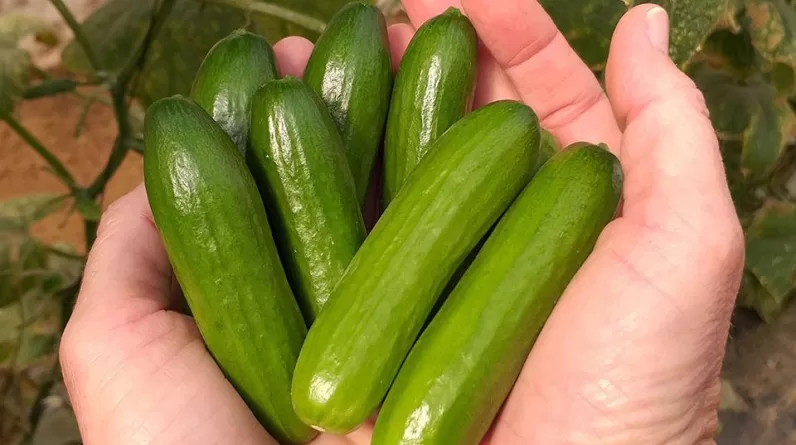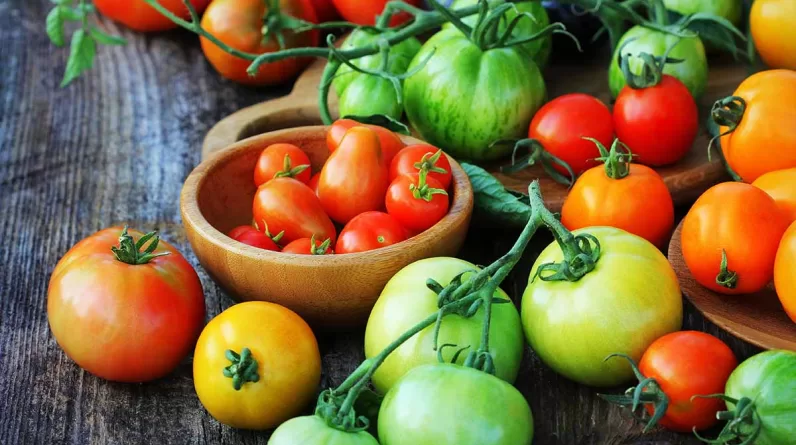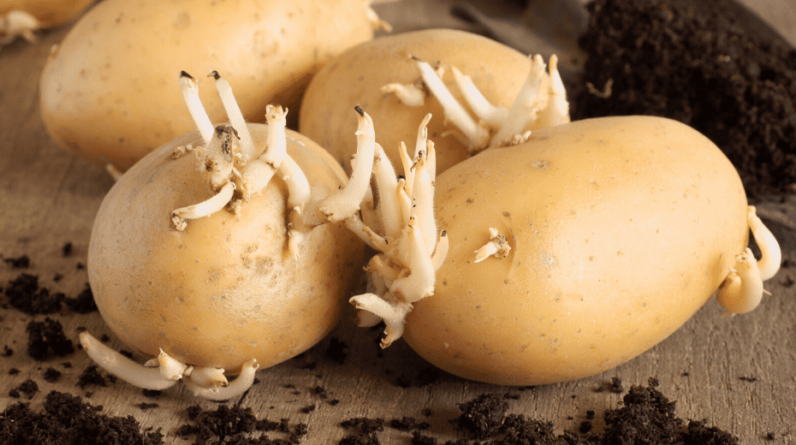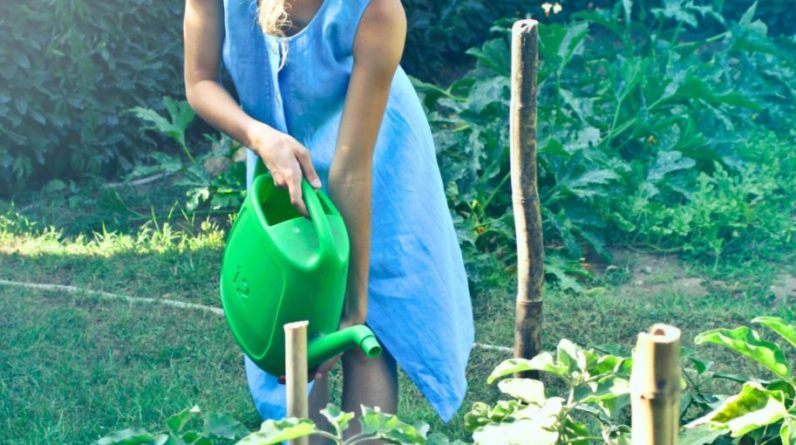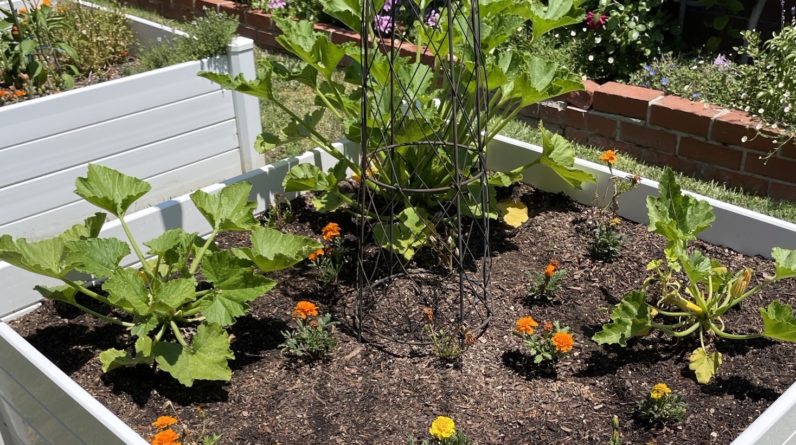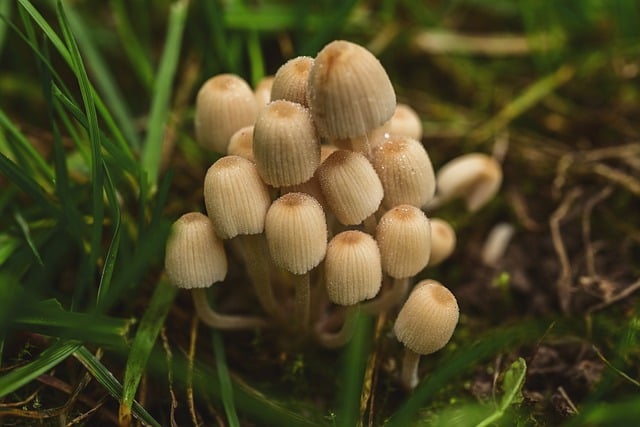Are you interested in permaculture and would you like to create a vegetable garden without having to constantly maintain it and replant vegetables every spring?
Perennial vegetables are the plants you need!
Growing perennial edible plants has several advantages. Not only is a perennial vegetable garden easier to maintain, but the fact of growing perennial vegetable or fruit plants there prevents it from being damaged during harvests.
In addition, if we plant the foliage of edible plants so that they touch each other, there is less risk of unwanted weeds invading the vegetable garden. You can also choose to cover the soil of your vegetable garden with organic mulch or to plant edible ground cover plants that densely cover ground such as strawberries or clover for example.
Perennial vegetable plants
Several perennial vegetable plants, perfectly adapted to northern climates, can be planted in your vegetable garden this spring to replace certain annual or tropical vegetables. Here is a description of some perennial vegetables.
ASPARAGUS
Height: 1.50 m
Width: 45 cm
Foliage: young green shoots, edible, and wispy green foliage, inedible
Sunshine: sun, partial shade
Soil: light, loose, and well-drained
Hardiness: zone 3
Of all the perennial vegetables, asparagus is probably the best known. Generally sold in pots or the form of claws (bare roots) in garden centers, asparagus should be planted in full sun or partial shade. Although it prefers light, loose, well-drained soils amended with compost, it can also tolerate clayey soils. Asparagus crowns should ideally be planted in the ground in spring, at a depth of 15 to 20 cm.
The first stems can be harvested just three years later to give the plant the time it needs to become well-established. At harvest time, which takes place in May and June, you must make sure to leave a few stems in place so that they form foliage, which will allow the plant to build up reserves for the next season.
The majority of asparagus cultivars are green in color, but there are also varieties with pretty purple or purple stems, such as ‘Purple Passion’.
SAINTE-ANNE SHALLOT
Height: 35 cm
Width: 15 cm
Foliage: green, thin and elongated, edible
Sunshine: sun
Soil: adapts to various light, well-drained soils
Hardiness: zone 4
Cultivated since the beginning of the 20th century, this edible perennial plant is part of Quebec’s rich agricultural heritage. Since the Sainte-Anne shallot – also called perpetual shallot – begins its growth early in the spring, we can begin harvesting at this time and enjoy it like a green onion. However, it is at the beginning of summer, when its foliage turns yellow and dries, that it reaches full maturity. Harvested at the end of June or the beginning of July, this shallot then has a more pronounced flavor.
To ensure its longevity, you must leave a few bulbs in the ground at harvest time. You can also dry a few bulbs in a shaded place protected from the rain to replant them a few weeks later, on the feast of Saint Anne, July 26. By purchasing bulbs from a seed company, you can also plant this perennial vegetable in spring.
Planted in light, well-drained soil, this shallot will grow all summer, spend the winter under the snow, and return the following year. A dozen bulbs planted in the ground will multiply tenfold, giving a harvest of more than 100 shallot plants the following year!
JERUSALEM ARTICHOKE
Height: 2.50 m
Width: indeterminate
Flowering: yellow in October, edible
Sunshine: sun
Soil: rich in humus and well-drained
Hardiness: zone 4
A close relative of the sunflower, the Jerusalem artichoke is however in a class of its own since it is grown more for its edible tubers than for its flowering which occurs late in autumn. Indeed, with their delicious artichoke flavor, Jerusalem artichoke roots are a wonderful replacement for potatoes.
However, this plant being particularly aggressive, it is advisable to plant it in a large textile or plastic pot buried in the ground or to surround it with a thick metal border to prevent it from invading the entire plant. ‘available space. It is also possible to grow this edible plant in a container on a terrace.
The stems of this perennial plant native to North America can reach 2.50 meters in height. Very robust, Jerusalem artichoke is perfectly hardy up to zone 4.
CHRIS
Height: 1 m
Width: 60 cm
Flowering: white in July, edible
Foliage: green slightly tinged with blue, edible
Sunshine: sun, partial shade
Soil: rich in humus, light, loose and fresh
Hardiness: zone 4
Of all the perennial vegetable plants, the cervix is in my opinion one of the most productive. It produces an abundance of elongated, sweet white roots similar to parsnips. The only downside is that they are difficult to clean.
The chervil also has pretty green foliage slightly tinged with blue and it produces pretty white inflorescences in July. Just like its roots, whose taste is reminiscent of parsnips, its leaves and flowers can be eaten.
Like carrots and parsnips, chervil prefers moist, light, loose, and cool soils, located in the sun or partial shade. This robust perennial plant is hardy to zone 4.
SORREL
Height: 60 cm
Width: 50 cm
Foliage: green, edible
Sunshine: sun, partial shade
Soil: rich in humus, well-drained and fresh
Hardiness: rich in humus, well-drained and fresh
Easy to grow, sorrel is one of the first leafy vegetables that can be harvested in spring. As it is perfectly perennial in our climate, it remains in place in the vegetable garden for many years without requiring special care.
Its light green foliage has a lemony flavor that adds zest to salads and soups. It goes well with certain fish: salmon with sorrel is a real treat! However, a word of caution, as sorrel contains oxalic acid, it is best to consume it in moderation. Sorrel is easily propagated by seed. As it grows quickly, harvesting can begin about three months after planting the seeds. To extend the harvest of leaves, remove the flower stalk as soon as it appears.
We also find blood sorrel on the horticultural market, whose green leaves are marked with blood-red veins. Although it has a less pronounced flavor than common sorrel, blood sorrel brings dynamism and originality to the dishes it accompanies.
WHAT IS PERMACULTURE?
Permaculture is a form of natural and sustainable agriculture that was developed in the 20th century. This model was first inspired by the Japanese farmer Masanobu Fukuoka (1913-2008) and was later popularized in the 1970s by the biologist Bill Mollison and the essayist David Holmgren, both of Australian origin.
Inspired by natural ecology and certain traditions, permaculture allows sustainable agricultural production, is energy efficient, and is respectful of living beings and their reciprocal relationships, while leaving as much room as possible for the expression of nature.
In a simplified way, we can say that permaculture is an agricultural approach that mainly relies on the use of perennial, robust, and vigorous edible plants, producing vegetables and fruits in abundance, year after year, with a minimum of care.


